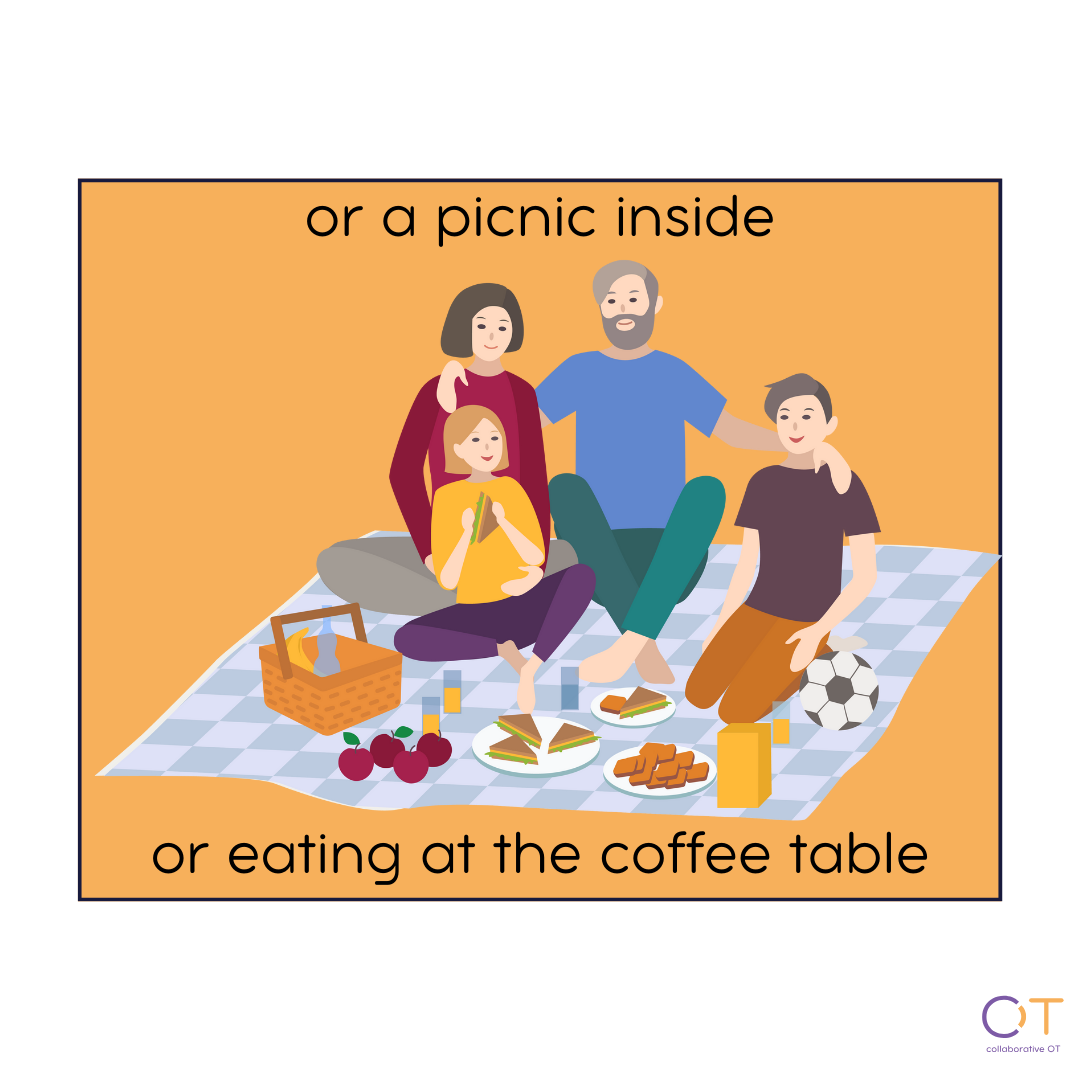Sitting down for dinner. This was a topic brought to me by an old friend. So often we talk about the food aspect of meals (which is huge an a discussion for another day) but often we forget about the factors surrounding it.
So why might kids have a tricky time with sitting down to eat?
Maybe they're not hungry (or don't realise they're hungry)
Sitting down at the table is a signifier to kids that it's' time to eat. It's where we most often eat breakfast, lunch, and dinner.
If someone isn't hungry, or doesn't want to eat, why would they want to go to the place where eating happens?
For their body, it's not time to go to the table yet, because they're not hungry.
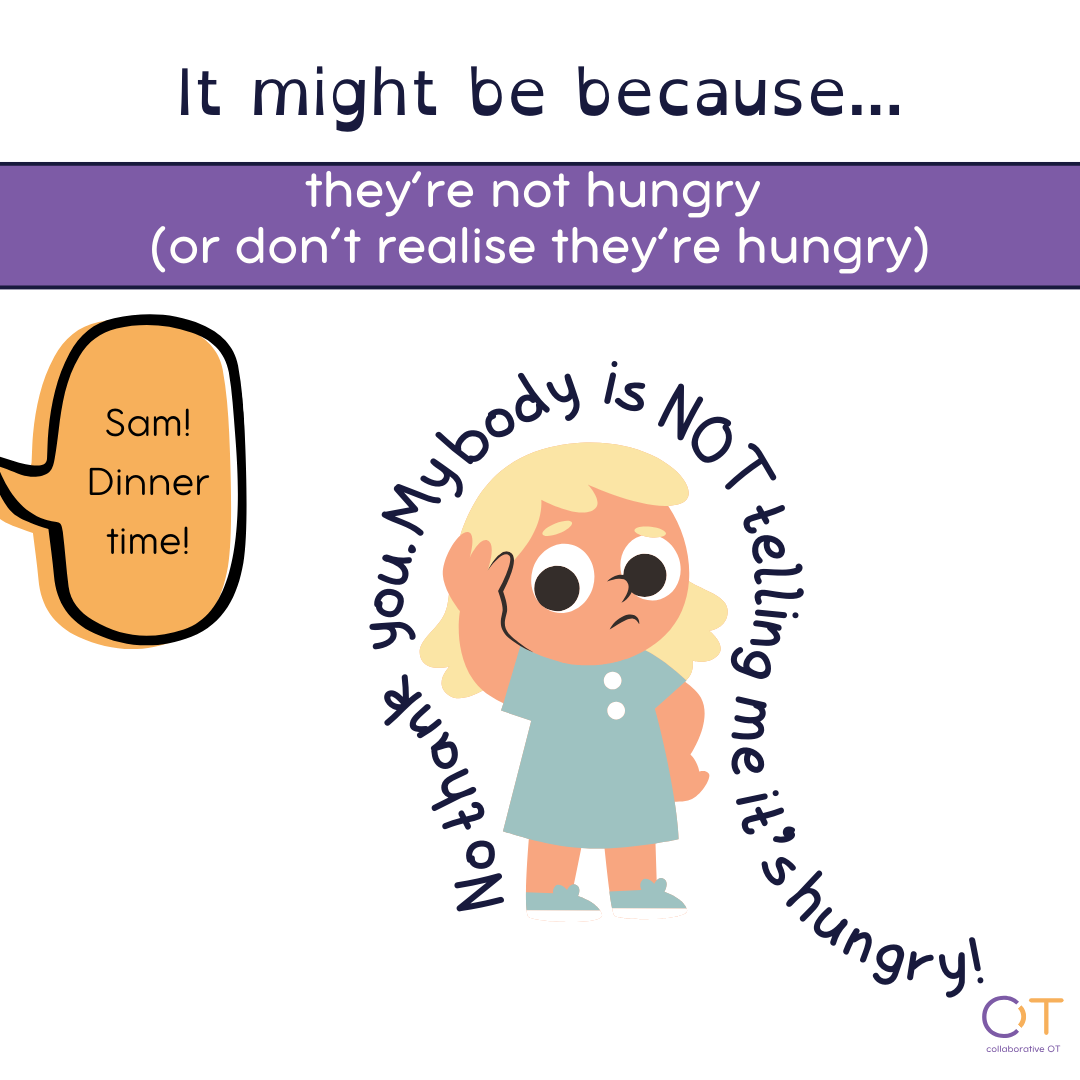
Or maybe food and eating is really tricky for them
This is similar to the above.
We know that eating and food can be hard for a lot of kids and a lot of neurodivergent kiddos (Levin & Rawana, 2016; Page et al, 2022)
So again, if someone doesn’t want to eat, why would they want to go to the place where eating happens? The place where they have to do an activity their body really doesn’t love?
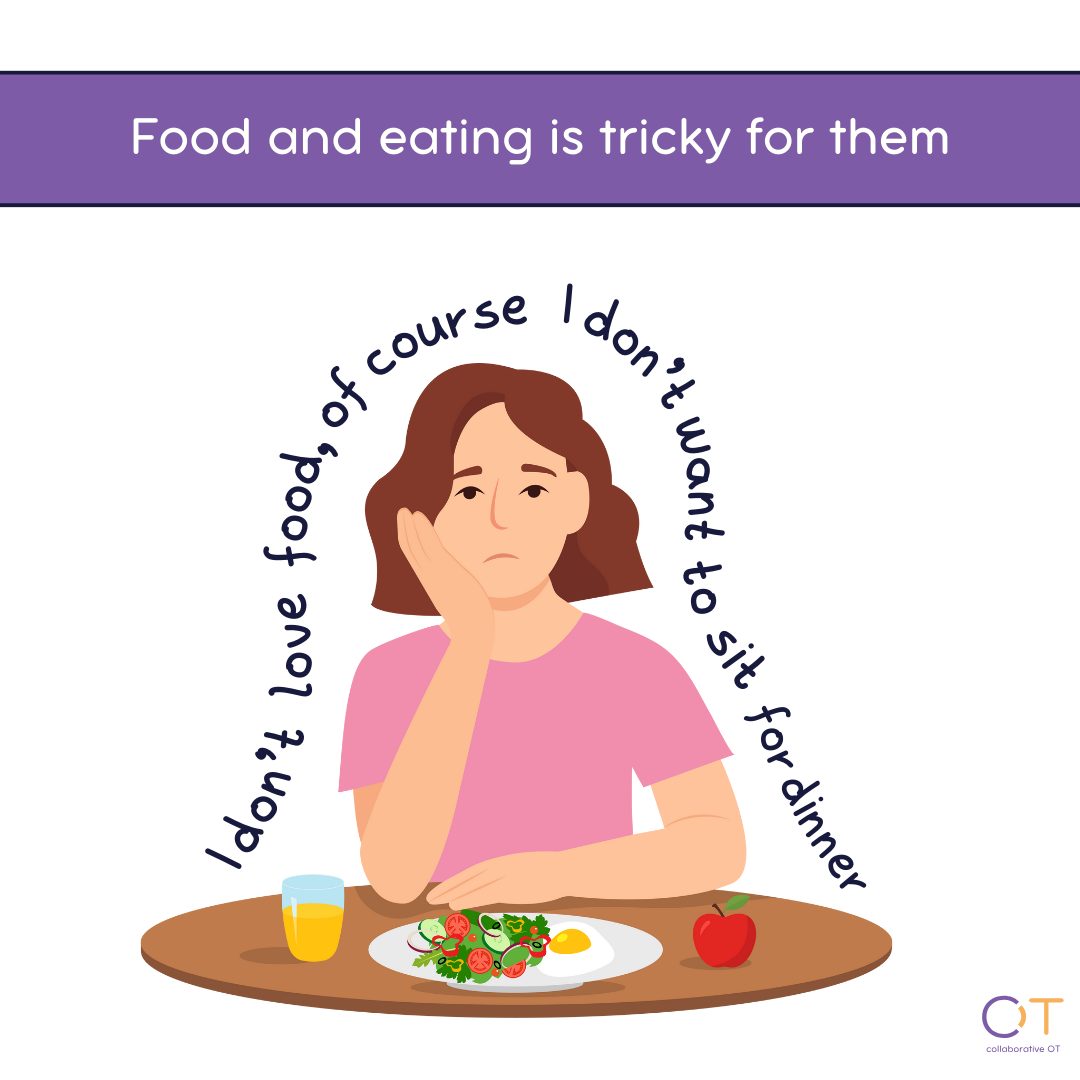
Maybe their bodies aren't ready to sit down yet
We’ve talked in the past about Moving Batteries and how they can be full, empty, or overcharged. If someone is reluctant or avoidant to sit down, it might be because their body isn’t in a place to sit.
Their Moving Battery might be too full.
Their body is telling them they need to move, and wriggle, and get energy out of their body. And sitting down for dinner doesn’t really support that need.

So then how do we help them?
Well we can....
Regulate. before mealtimes!
Regulating means matching our energy to the task. So, if your child is going fast and zooming around the place like Lightning McQueen, we need to help them get to a state where they can sit down.
There are so many different ways to do this but using up some of their Moving Battery is generally a good way to help. Moving and exercise is a great tool to support attention, focus, and self-regulation in general (Wood et al., 2020)
This could look like a jump on the trampoline, some push ups, some yoga, even carrying the rubbish out is a great way to move the body and regulate the body!
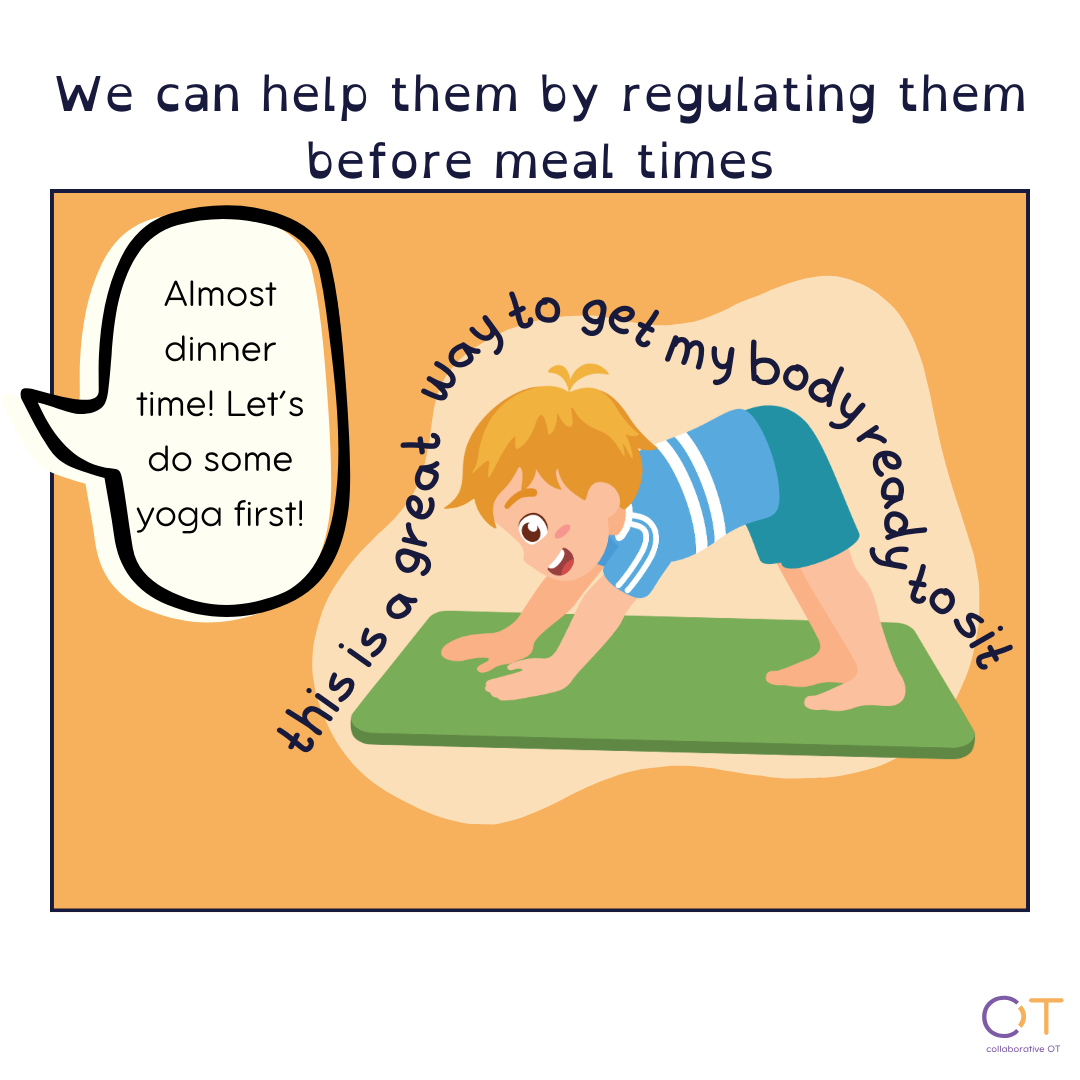
We can also make mealtimes more fun!
As a general rule, kids (and adults) like doing things that are fun.
The more fun we can add to an activity, the easier it is to do.
So adding ‘fun things’ to mealtime, can make sitting at the dinner table easier. One important thing to note here is that the ‘fun thing’, shouldn’t be used as a bribe; it shouldn’t be taken away if your child doesn’t engage in mealtime, or eat, or sit how you want (Ripple et al., 2023). The ‘fun thing’ is consistently there to help them enjoy sitting at the table and being a part of mealtime.
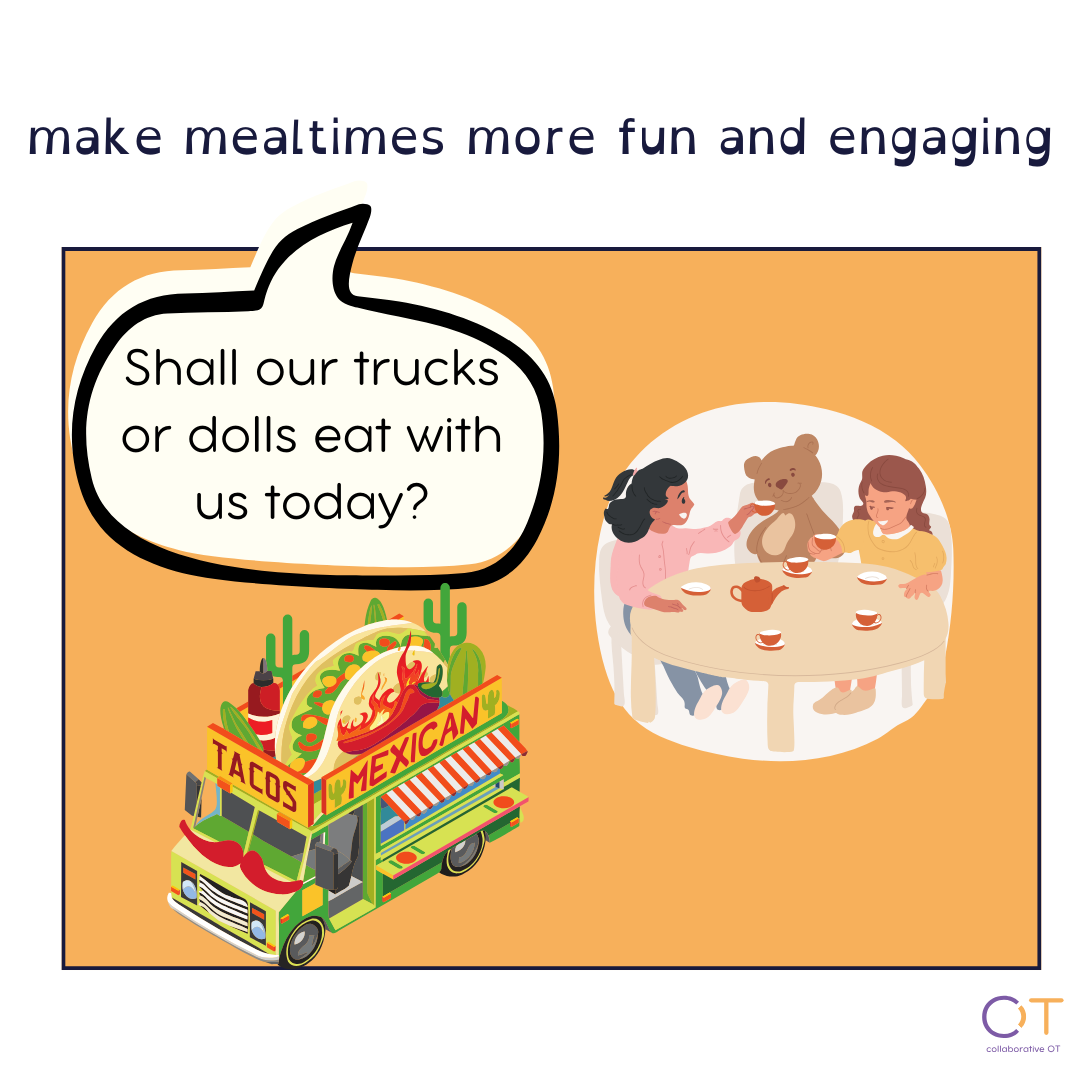
So what can this look like?
I once worked with a family who bought their own sushi train to help with meal times.
Growing up, my family played simple board games like Tri-Ominos (dominos but with three sides) or Trivial Pursuit.
But it doesn’t have to be that complex.
Maybe it’s putting on some fun music for dinner?
Maybe it’s getting the toy trucks to help serve up the food?
Or setting a place for the dolls?
Or even just a fun plate and set of cutlery?
There are so many creative and different ways to make mealtimes more fun.
On the flip side, of making things more fun is reducing demands
Demands or barriers are the things that get in the way of us doing thing.
So, if someone is having difficulty with mealtimes, reducing demands can help make the experience easier (Ripple et al., 2023)
For example, if someone is having difficulty sitting at the table because they’re not hungry or have a tricky time with food. ‘Dinner Time’ can be reframed as ‘Family Time’ (where there just happens to be food). The focus has switched from food to family.
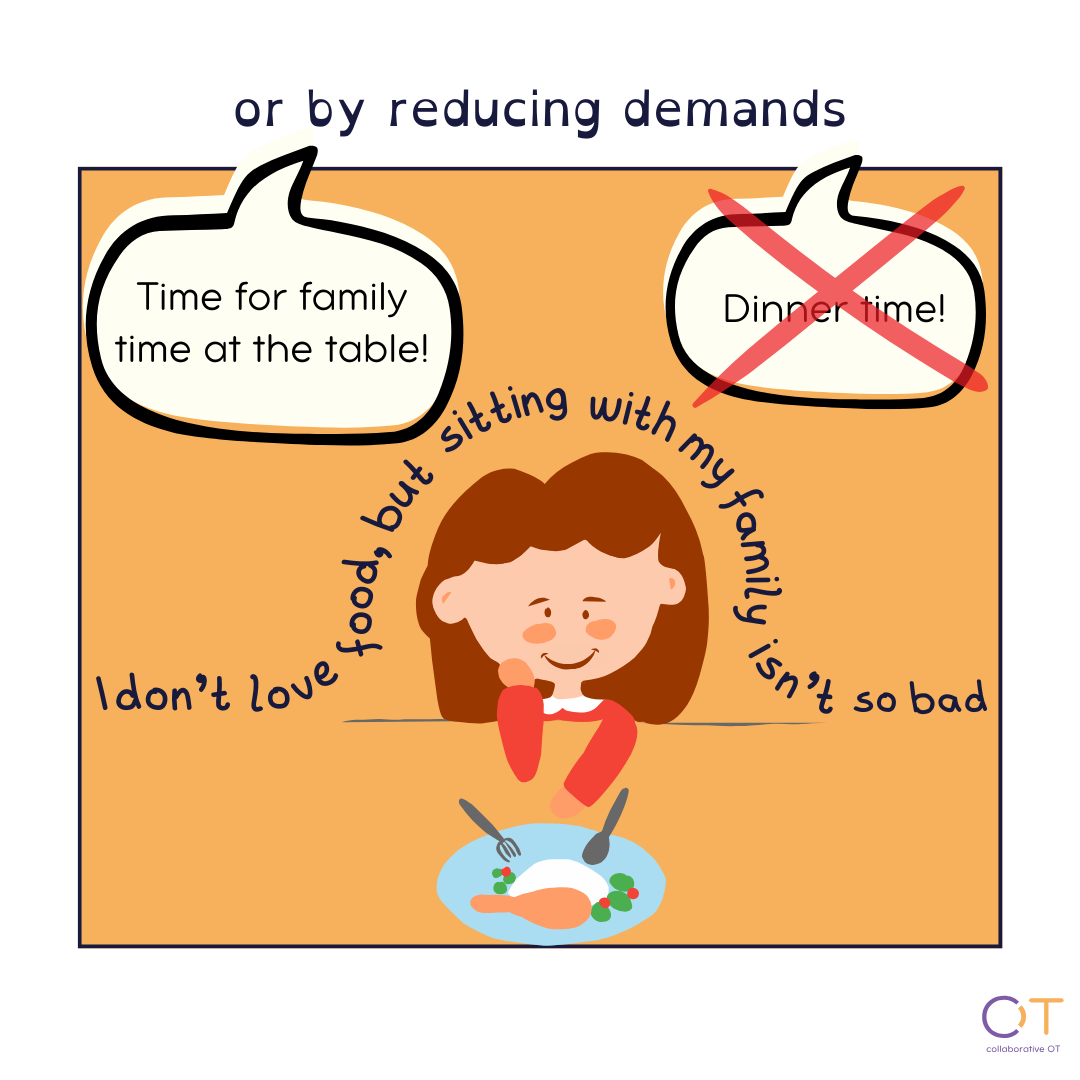
Alternatively, if the demand of sitting down at a chair is too much for your child, different seating options might be easier. This could be on a stool, or another flexible seating option (provided it’s not increasing a choke risk) can be great options to reduce demands.
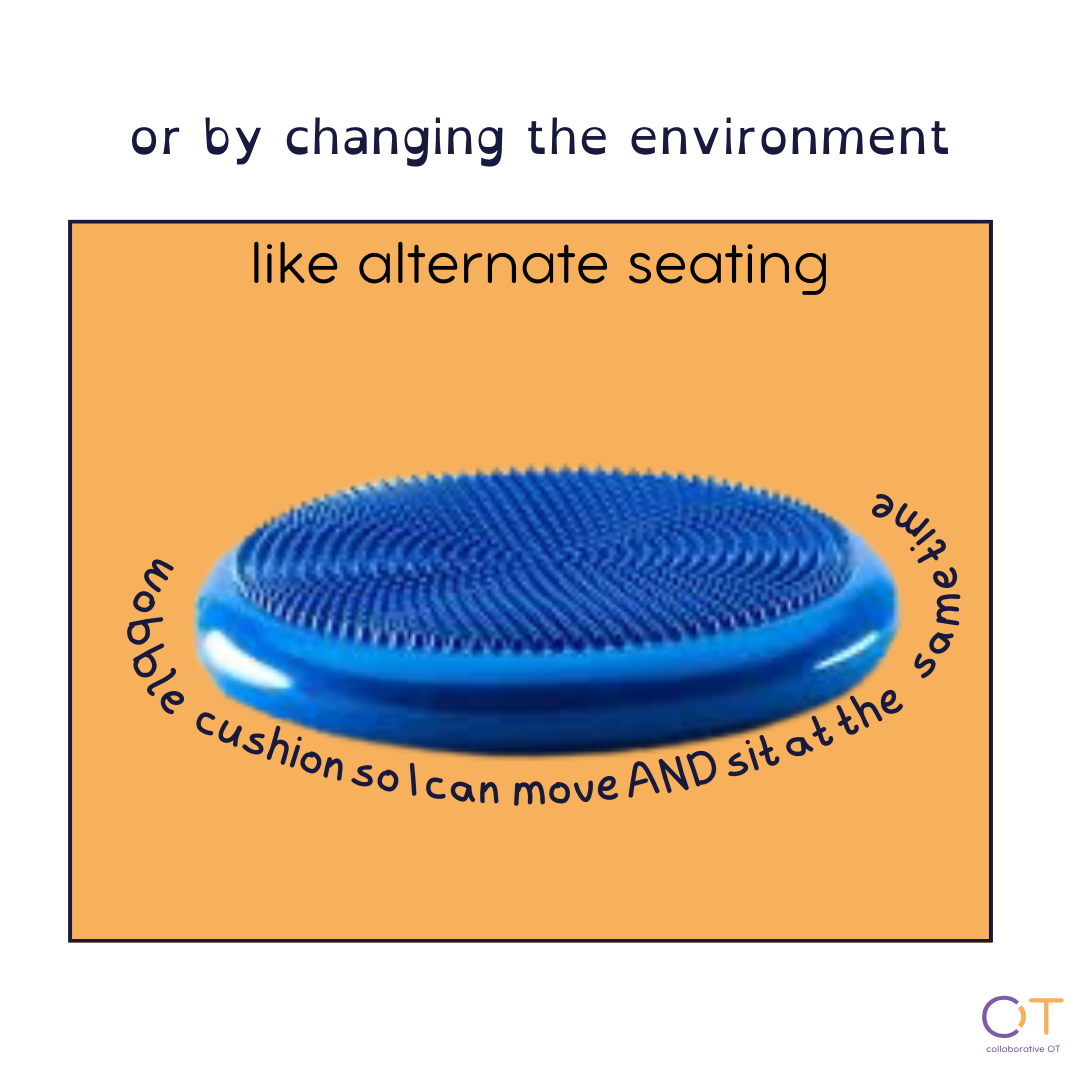
Lastly for today is changing the environment
When we’re thinking about ‘sitting down for dinner’ we have to carefully think about what our real goal is.
Do we want our child to physically be sitting at the table for a meal? Is the goal to spend time as a family? Is the goal to get everyone fed and fuelled? Maybe it’s a combination of both.
Either way, it’s important to think about other ways we can do things to reach our goal.
So maybe, dinner time doesn’t have to happen at the table every meal.
Maybe dinner time happens on a picnic blanket in the living room?
Or at the coffee table?
Or even in front of the tv?
It might not even be the environment that changes too; changing mealtimes can make a huge difference too. So if your child’s not hungry, you could shift meal-time so it’s later. If you’re child is overtired and at capacity for the day, you could shift meal-time so it’s earlier
As always, is this going to be foolproof? No
Are these the only strategies and reasons kids have difficulties with things? No
But can learning about why people struggle with things make a difference? Yes
Can changing how we do things make a difference? Absolutely yes.
So to summarise:
Kids might have difficulty with sitting down for mealtimes because:
- They’re not regulated and ready to sit down
- They’re not (or don’t think) they’re hungry
- Food and eating is hard for them
To help with meal time we can:
- Move and regulate our bodies before dinner
- Make mealtimes more fun
- Reduce demands and change the focus
- Change how, where, or when mealtimes occur
References
Levin, R. L., & Rawana, J. S. (2016). Attention-deficit/hyperactivity disorder and eating disorders across the lifespan: A systematic review of the literature. Clinical Psychology Review, 50, 22–36. https://doi.org/10.1016/j.cpr.2016.09.010
Page, S. D., Souders, M. C., Kral, T. V. E., et al. (2022). Correlates of feeding difficulties among children with autism spectrum disorder: A systematic review. Journal of Autism and Developmental Disorders, 52, 255–274. https://doi.org/10.1007/s10803-021-04947-4
Wood, A. P., Nocera, V. G., Kybartas, T. J., & Coe, D. P. (2020). Physical activity and cognitive aspects of self-regulation in preschool-aged children: A systematic review. International Journal of Environmental Research and Public Health, 17(18), 6576. https://doi.org/10.3390/ijerph17186576
Ripple, H., Smith, H., & Bates-Brantley, K. (2023). Strategies to promote positive mealtime behavior in early childhood. Perspectives on Early Childhood Psychology and Education, 7(1). https://doi.org/10.58948/2834-8257.1033
